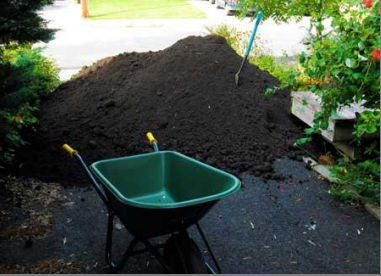Need Some Advice for Your Landscape?
Helpful Landscape Tips: Questions to Ask About Your Landscaping
Choosing the right landscape designer and contractor is the best way to ensure your landscape project runs smoothly and look beautiful. It's relatively easy to start a business and call yourself a landscaper so be careful not to be swayed by the lowest bid.
Ask the following key questions when choosing a landscape contractor:

Let There Be Light
Who wouldn't want an artfully lit landscape on a warm Michigan summer night? Buying and installing lights is not incredibly difficult or expensive, knowing which fixtures to buy and what to light is the secret. A well-lit home is safer and more secure than an unlit home. Use the tips below so your lighting will be both functional and aesthetically pleasing:
Who are the lights for?
Do you simply want your house to look pretty for others passing by or do you actually do things outside at night? For example, strong beams on a driveway basketball court can add hours of post-dusk fun.
Consider the source. The goal is to see the landscape features, not the light source that is shining. Be sure to purchase lights
that can handle hard Michigan winters. LED lights require less electricity; however, they do not get hot enough to melt the spring
snow around them.
Flashlight plan. Use a "big" flashlight to test out ideas and sketch an accent lighting plan.
- Uplighting. Do you have specific architectural features such as an archway or arbor? Do you have favorite trees to highlight? Set the flashlight at the base of several features. Uplighting is great for tall ornamental grasses as well.
- Downlighting. Try shining the flashlight down on features you want to highlight. Downlighting is commonly used for paths and walkways.
- Backlighting. Are there any features you'd like to silhouette? Place the flashlight behind them to see the effect.
- Crosslighting. Find another flashlight, light a feature from two different directions for added dimension.
- Submersible lighting is great for ponds. Have a waterfall? Consider spotlighting it.
Patios, Pathways, Walls & More
Hardscaping is a term landscape contractor’s use referring to the part of a home or building's grounds consisting of structures, such as patios, retaining walls, and walkways made with hard materials. Anything made of hard material that's not living is hardscaping. Whether attempting a hardscaping project yourself or hiring a professional to do it for you, use the following tips to avoid expensive pitfalls:
Look at the big picture. Even if you're only tackling one element at a time, consider designing the entire area before you begin. Once a hardscape project is in, it can be costly and difficult to tear out and move
Pay attention to drainage. Make sure you have adequate drainage and when possible capture the water and use it on site.
Balance boulders. A big rock, sitting on top of soil does not look natural. Bury boulders deep enough so they blend in and balance them with plants.
Love your lines. Think about the natural lines of your outdoor space, use curves to transition gracefully from one element to the next for a natural look. Hard rectangles and squares work well for a contemporary design.
Leave some lawn. Many homeowners in southwest states opt for all hardscape and plants but there's nothing like walking barefoot in your yard during summertime in Michigan. Leave enough grass to mow.
Carefully mix colors. Complement your home's exterior by finding two or three materials that coordinate with each other and your home. Consider texture as well as color and remember wood decks and railings count as a texture and color.
Consult an engineer on big projects. No explanation needed; it will cost you plenty if a big project fails structurally.
Use good material. A great design will only last as long as the material used holds up and don't skimp on site preparation only to have your hardscape settle and heave in frost.












